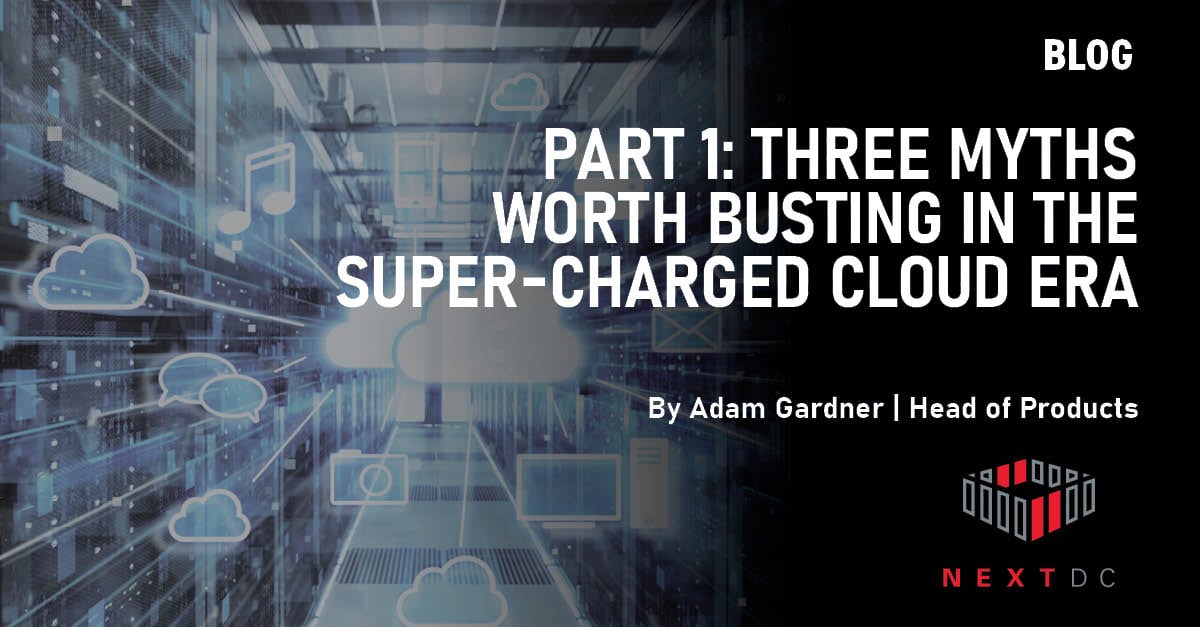Ensuring ‘consistent’ connectivity experiences is no longer a pipe dream as we discovered in Part 1 of this ‘MythBusters’ series.
Often, misinformation and lack of clarity can hinder today’s overstretched IT leaders from seeing the big picture and achieving the outcomes they’re chasing for their digital infrastructure strategy. But with the right digital infrastructure strategy built on an interconnection-first architecture, the picture becomes much clearer.
In Part 1 - 3 myths worth busting in the super-charged cloud era, three big myths were busted: the cost conundrum in the public versus private debate; Multi-Cloud story and why it matters; and the flexibility and scalability equation.
For the purpose of this piece, I’ll focus on busting myths #4 and #5. My goal is to provide further clarity and help identify the questions you should be asking to gain the assurance you need to succeed with your digital infrastructure strategy.
So, let’s get into it.
Myth #4 – Are you losing control, or are you gaining it?
The growth in data, combined with the speed at which your business operates means that any manual tasks, management, troubleshooting, or remediation is onerous and time consuming, sapping your effectiveness and increasing complexity and risk.
Utilising automation and software-defined networks add a new layer of value that can make arduous daily operations largely autonomous. Virtual interconnection platforms, like NEXTDC’s AXON platform facilitates seamless interconnection and interoperability with the clouds, IT services and other locations that form your Hybrid IT environment. These dynamic interconnections can be established in real-time, via an intuitive self-service portal where you’re given complete control of creating, scaling, and decommissioning connectivity services.
Regaining and retaining control comes down to visibility. AXON delivers complete transparency over your public and private cloud connections, from each elastic cross connect right down to each individual port. This transparency not only benefits operations, but it also provides rapid visibility and isolation of any issues that may arise, enabling faster resolution times.
This means you’re empowered to accelerate your IT transformation objectives and securely connect and interact with the right data and workloads, at the right time, the right place and using the right medium to suit your unique requirements.
Questions to Ask:
-
How can I see all of the connections I have to my cloud architecture and other IT services providers?
-
What is the current process used to establish new connections or make changes to my existing environment? Can I self–service changes?
-
Am I limited in choice, or do I have options around my interconnection strategy?
-
What sort of SLA’s or service commitments do we have?
Myth #5 - Proximity to cloud – what difference does it make?
The cloud era means that all aspects of cloud are now a part of our daily dialect. As such, you should be asking questions around the proximity of your core IT environment to your clouds.
The flexibility and versatility of your interconnection strategy is critical, but so too is the proximity to cloud and whether you are taking the lowest latency (fastest) and most direct route.
The reason for this is two-fold;
1. It’s a big part of the latency conversation. Locally and natively interconnecting to your clouds and IT services means everything is localised to the LAN. Local, native and direct interconnection options provide you the lowest-latency connections that reduce network jitter (variability) and improve the performance and efficiency of your environment.
2. A fundamental requirement for your organisation to compete and remain ahead of market changes, disrupting and innovating is flexibility and agility. Things happen and situations can change quickly. You need the agility to move and change with the evolving climate just as quickly. When your connectivity strategy is underpinned by adynamic self-service flexible strategy, located the closest proximity to your cloud and IT services, you can pivot and switch gears in real-time. By retaining choice and flexibility, regardless of the move you need to make such as scaling your digital services, establishing new instances, or bursting workloads – close proximity to your data and workloads ensures your next steps happen quickly, cost effectively and with zero operational impact.
The proximity of your environment, to your cloud and IT services, and whether geographically diverse and redundant cloud access capability is present are key factors for success.
When planning your long-term digital infrastructure strategy, re-shape your thinking around interconnection and evaluate the critical support, scale, resilience, geo-diversity, and reliability you need.
Questions to consider
- How do you facilitate local, native, and direct access to your Multi-Cloud environment?
- How do you support geo-diversity and build more redundancy into your cloud strategy?
- What are your options in achieving the lowest latency, most secure paths to your cloud platforms and other digital ecosystem partners?
Analyst Corner:
Misinformation continues to abound in the market, Ecosystm analyst Andrew Milroy weighs in on the questions organisations should be asking.
According to Milroy, “customers should be asking who can offer them the best interconnectivity to all the cloud and IT resources they require.
“By best, I mean lowest latency, highest reliability, highest availability, widest choice of cloud resources etc”.
“It shouldn’t be so confusing but like much of tech, it is. Customers should look for things like low latency, high availability, choice of cloud resources via interconnection (cloud onramps). Interconnectivity to the widest selection of cloud resources is very important.”
Your interconnection strategy underpins the success of your business, so finding a partner that will guide you along your cloud journey is a critical part of your success story.
If we can help you bolster your interconnection strategy and support your cloud journey, reach out to the NEXTDC team.


